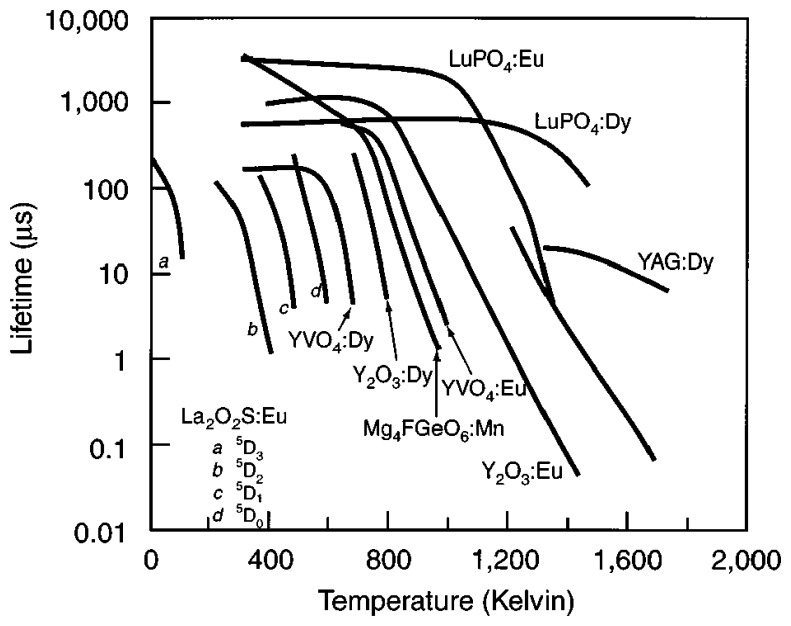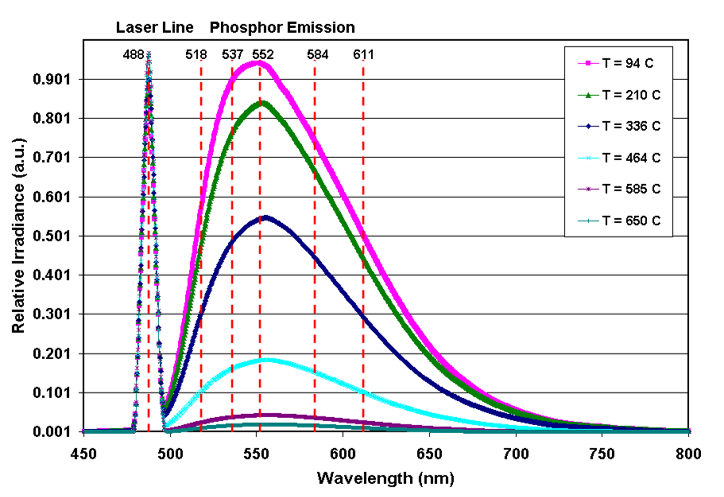What is Phosphor Thermometry?
Phosphor thermometry is a method for using the optical properties of phosphors to measure temperature. Optical properties can include the luminescent decay time, photoluminescent intensity, or emission wavelength shift. Phosphor thermometry can offer significant advantages to conventional temperature measurement tools and instruments. As an optical technique, it can be used remotely with high speed and precision and can also be effective at extremely high temperatures. For example, parts of a moving blade, a jet or rocket engine can be coated with a phosphor and a remote laser can be used to energize the phosphor.
By monitoring the changes to the phosphor’s optical properties, it is possible to determine the surface temperature of the coated engine part. A phosphor can also be applied to the tip of an optical fiber probe and such probe can then function similar to a standard thermocouple. Unlike a thermocouple or even a pyrometer, some phosphors have the ability to respond to temperature changes at very high speeds that can be down in the nanoseconds.
The most commonly used phosphor thermometry method involves the use of changes in the fluorescent decay time with temperature. A wide range of thermographic phosphors are available to cover different temperature ranges and lifetime responses, as illustrated in the figure below. Material hosts used for thermometry applications have included mostly garnet systems, oxides (such as Y2O3), and Vanadates (VO3, VO4,V2O7). Other systems have also been used such as oxysulfides (La2O2S, Gd2O2S, and Y2O2S), and Yttrium/Lutetium phosphates (YPO4, LuPO4O).

Decay time of various phosphors vs. temperatures. Published by Allison and Gillie

